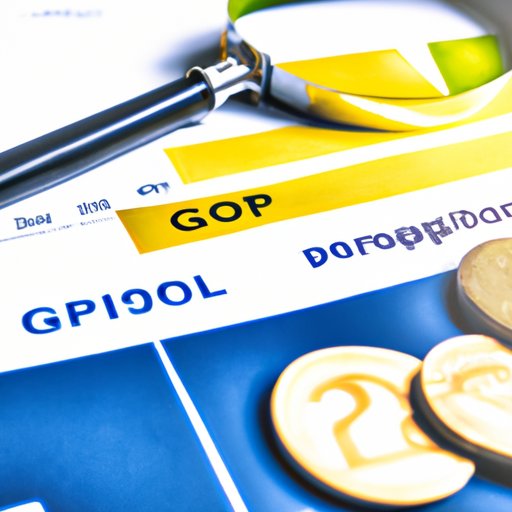I. Introduction
When economists analyze an economy’s wellness, they take a closer look at its Gross Domestic Product (GDP). GDP is a macroeconomic indicator that measures the overall value of goods and services produced within a country’s borders over a particular period. Nominal GDP is calculated using current market prices and doesn’t account for inflation. This article will provide a comprehensive guide on calculating nominal GDP, outlining the necessary data points, offering solutions to common problems, and using real-world examples to facilitate an understanding of the importance of this economic indicator.
II. A Step-by-Step Guide
Nominal GDP is the total value, in current dollars, of the goods and services produced in a region during a particular period, usually a year. Here’s how to calculate nominal GDP:
- Identifying the data points: The nominal GDP calculation considers the price and quantity of all final goods and services produced within a country’s borders.
- Quantifying the goods and services: The market value is determined by multiplying the quantity of each product by the current market price.
- Calculating nominal GDP: By combining these values for all the goods and services produced, the nominal GDP is calculated.
For example, suppose a country has produced 10,000 apples and sold them at a current market price of $3 per apple. Further, assume that the country has produced 5,000 bananas and sold them at $5 per banana. Then, the nominal GDP would be:
Nominal GDP = (Quantity of apples * Price of apples) + (Quantity of bananas * Price of bananas)
Nominal GDP = (10,000 * $3) + (5,000 * $5) = $55,000
III. A Problem-Solving Approach
However, several problems can arise when calculating nominal GDP, such as adjusting for inflation and different currencies in different regions. Here are some solutions to overcome these problems:
- Dealing with inflation: To calculate nominal GDP, the current market prices are used, and any change in price would be reflected in it. However, it might lead to an overstatement of GDP due to price changes across different periods. One alternative to account for inflation is Real GDP, which considers the inflation rate and adjusts the nominal GDP for it. Another method used is the GDP deflator, which is a price index that measures the changes in good and service values over time.
- Adapting to different currencies: To ease comparisons between different countries, the international comparison program (ICP) converts values using purchasing power parity (PPP), which adjusts the exchange rate for differences in price levels between two countries.
IV. A Data-Driven Analysis
Exploring real-world data can offer insights into how nominal GDP is calculated and its significance. For instance:
- Comparing nominal GDP values: you can take nominal GDP values from different countries or sectors and compare them to examine their economic standings.
- Drawing conclusions: Analyzing nominal GDP change over consecutive years is useful to gauge an economy’s performance. Growth will demonstrate that an economy is expanding, while decline will indicate that it is contracting.
V. A Round-Up of Techniques
Several methods and formulas are used to calculate nominal GDP, such as the expenditure approach, income approach, and value-added approach:
- The expenditure approach: This adds up the final expenditure on goods and services in the economy.
- The income approach: The income approach counts the total income earned by all the factors of production or households in the economy.
- The value-added approach: This method calculates the difference between the selling price of goods and services and the cost of inputs purchased from other firms.
Some commonly used software in calculating nominal GDP include Microsoft Excel or Google sheets.
VI. An Interactive Walkthrough
Visual aids can make nominal GDP calculation more tangible. Here’s how you can go through a nominal GDP calculation process using graphs and images:
- Collect data: gather all data about goods and services produced within a nation or region over the chosen period.
- Calculate nominal GDP: use the formula to calculate nominal GDP.
- Map nominal GDP: draw a nominal GDP map of the calculated value with different industries and sectors.
- Design interactive presentations: create presentations displaying the map and guiding users through the process using graphs and images.
VII. Conclusion
Knowing how to calculate nominal GDP is vital for gaining a broader economic understanding and analyzing an individual economy’s situation. This article provided a step-by-step guide on calculating nominal GDP, detailed common problems faced, and offered solutions to overcome them. Moreover, it used real-world examples and data to analyze nominal GDP values and explore variances between countries and economic sectors. Finally, several techniques, formulas, and software were explored, and an interactive walkthrough for visual learners was provided.
